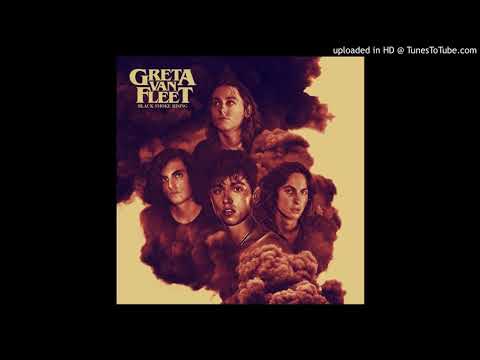Are you looking for an acoustic guitar that is as loud as an electric guitar? There are a couple of options to choose from. You could do what musicians have done for many years, which is to mic your traditional guitar. Or, you can get an acoustic/electric guitar, and have the best of both worlds literally at your fingertips.
Many people think that there are several differences between the two types of guitars. In reality, the only major difference is that the acoustic/electric guitar has electronics so it can be amplified. It has a pickup and a preamp. The pickup turns the sound into an electronic signal, and that signal is amplified through the preamp. What you end up with is an acoustic guitar with volume control, to put it simply.
Today we are going to take a look at how to amplify a traditional acoustic guitar, and how acoustic/electric guitars work. Let’s get started.
Amplifying an Acoustic Guitar
As we mentioned in the introduction, you can amplify an acoustic guitar in order to be able to have a louder sound. First, you will need to make sure the microphone is positioned near the sound hole. This is the traditional way of doing things, because it allows the musician to be able to capture the natural sounds of the acoustic guitar.
There are some downsides to this method though. For starters, if you are not using an actual acoustic-electric guitar, you won’t have very many effects to work with. Also, it can be a real pain to get the microphone positioned just right. It has to be in the right position, and be at the right angle in order to get the sound you are looking for.
Another option is to install an onboard pickup in the traditional acoustic guitar. There are many options available, inclluding a piezo, soundhole, microphone, or transducer pickup.
Each of these pickups has a different tonal quality, and they all range in price. Keep in mind that a piezo pickup can be very difficult to install, and it could end up damaging your acoustic guitar if you don’t really know what you are doing.
A microphone pickup, on the other hand, clips right to the sound hole or inside the guitar’s chamber. You will not need to modify your guitar, so there is no chance that any damage will be caused by installing the pickup. But, since guitars don’t come in a universal size, not all pickups will fit on all sound holes.
What is an Acoustic/Electric Guitar?
Acoustic/electric guitars, also referred to as electro/acoustic guitars, are identical to traditional acoustic guitars, with one exception: they are fitted with pickups and preamps.
They usually have an EQ and volume controls, and some will even have built-in tuners. A traditional acoustic guitar does not have any electronics. The pickup converts the sound from the guitar into an electronic signal. This signal is amplified by the preamp.
You can find acoustic/electric guitars in all of the same sizes and variations as traditional acoustic guitars: parlor, jumbo, classical, dreadnought, etc.
Yes, you can play this type of guitar without using an amplifier, and you will get the same sound quality as you would from any quality acoustic guitar. In fact, many people falsely believe that an acoustic/electric guitar works better when plugged in (more on this in the next section).
When it comes to performing live, many musicians prefer the acoustic/electric guitars, because they can be plugged in and amplified. This is much more convenient than setting up an external microphone near the sound hole and connecting it to a PA system.
Can You Play an Acoustic/Electric the Same Way as a Traditional Acoustic Guitar?
As we already mentioned, besides the fact that there are electronics installed, an acoustic/electric guitar does function in the exact same way as a traditional acoustic guitar. It has a regular guitar body, and a sound hole, which is how the sound is amplified when it isn’t plugged into an actual amplifier. Other than that, the design and functions are pretty much the same.
One of the biggest advantages of the acoustic/electric guitar is that there is a lot more flexibility when it comes to plugging it in and having effects to play around with. Not only are there some built-in effects, there are also outboard effects you can add with pedals.
When it comes to playing either type of guitar, there really is no difference. Anything that can be played on an acoustic guitar can be played on an acoustic/electric guitar.
Does an Acoustic/Electric Guitar Sound Like a Traditional Acoustic Guitar?
There is a common misconception that an acoustic-electric guitar played through an amplifier sounds just like a regular acoustic guitar. Actually, this is not the case at all. Try playing an acoustic-electric guitar with and without an amplifier, and you will hear a huge difference in the sound, both in volume and in quality.
When using a traditional acoustic guitar, you get a sound that is rich and lush, with a wide range of frequencies.
When an acoustic-electric guitar is plugged into an amplifier, a PA system, or an audio interface, you will notice that the sound is very unnatural, almost tinny, and quite flat as well. But, don’t let this discourage you from owning one of these guitars. They are very popular with many musicians when performing live.
The reason for this less-than-natural sound is the fact that no matter how great the electronics are, they can never quite match the frequency spectrum of a regular acoustic guitar. Even as wonderful as technology is today, it still can’t quite match the sound that comes from a guitar’s sound hole.

The Versatility of the Acoustic/Electric Guitar
When it comes to different sounds and effects, the acoustic/electric guitar is far more versatile than a regular acoustic guitar. This is because the external amp allows you to play around with sounds. You are able to play around with the EQ on both the guitar and your amplifier, and create just the right tone. This is something you just can’t do with a traditional acoustic guitar.
An added bonus is that with an acoustic/electric guitar, you have a built-in tuner. You don’t have to worry about carrying a tuner around with you, because it is already in your guitar. Just make sure that you always have spare batteries on-hand, as just like a regular clip-on guitar tuner, these also require the use of batteries.
Going back to the various sounds you can produce, because the guitar is amplified, you can modify the tone by using a variety of pedals. You can create some pretty cool sounding effects by using reverb, chorus delay, and multi-effects pedals. This is going to really expand the range of music you are able to play, and you can create your own personal sound.
The Pros and Cons of Acoustic/Electric Guitars
While there are many great things to be said about playing on an acoustic/electric guitar, it doesn’t mean that it’s all moonlight and roses.
Everything has its pros and cons, including all types of guitars. Let’s take a look at the pros and cons of acoustic/electric guitars.
Pros
- Amplify and project sound easily
- Many more sound and tone options than an acoustic guitar
- You can add fun effects and change the signal to your liking
- You can easily move around when playing on stage
- It can be used with an amplifier or unplugged
- Ideal for buskers and live performers
Cons
- The original sound quality of an acoustic guitar is not the same when the guitar is plugged in
- Acoustic/electric guitars tend to be more costly than regular acoustic guitars
- You will need to purchase an amplifier, preferably one that is made for acoustic/electric guitars
Can You Use an Electric Guitar Amp?
Many people ask if an acoustic/electric guitar can be plugged into an amp made for electric guitars. The short answer is yes.
But, there is a caveat here. Amplifiers made for electric guitars are made to add distortion and change the tone. This may be great in some instances, but not when you want a true acoustic sound.
The best option is to purchase an acoustic guitar amplifier, which is made to create a signal that is transparent and can enhance all of the frequencies from an acoustic guitar.
Conclusion
If you are in the market for a new acoustic guitar, you may want to seriously consider getting an acoustic/electric guitar, just for the versatility alone.
For the performing musician, it is often much more convenient to have a guitar that can be plugged into an amplifier instead of having a microphone set up to capture the sound.
Even if you are simply playing for your own personal enjoyment, it can be loads of fun to play around with an acoustic/electric guitar. Chances are you will likely invest in one at some point, so why not do it now?




















